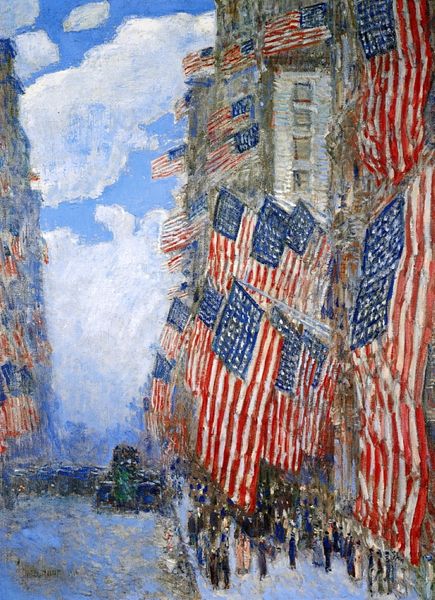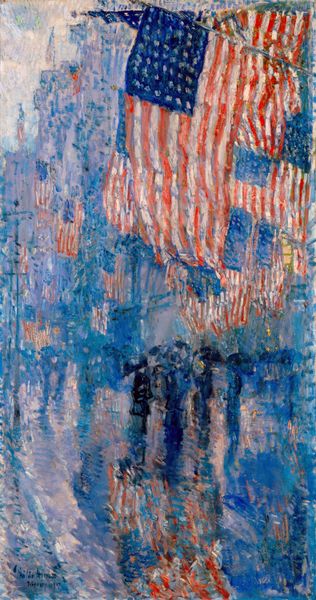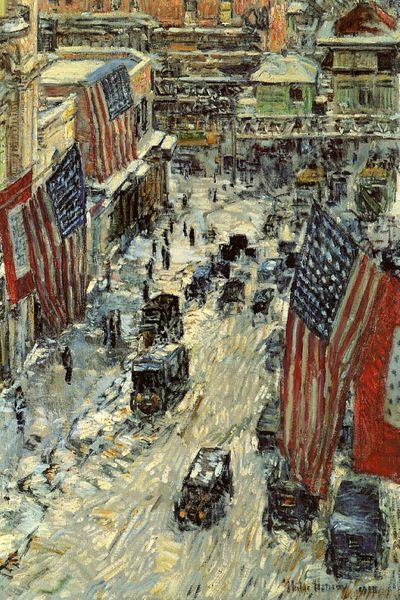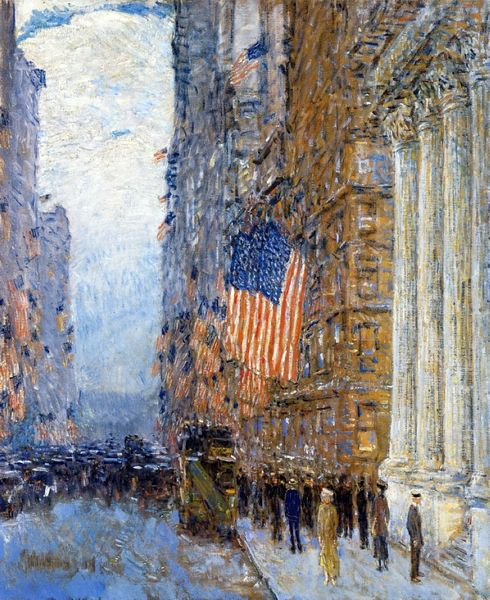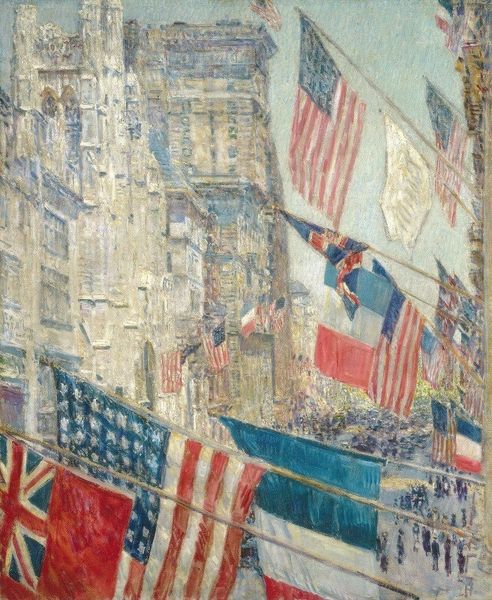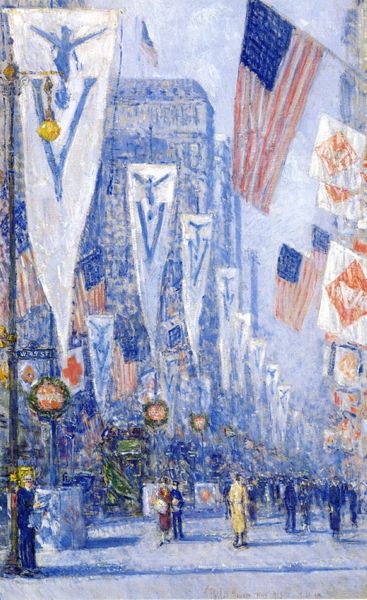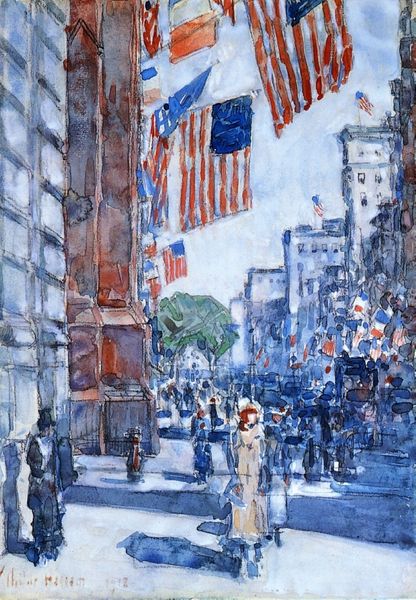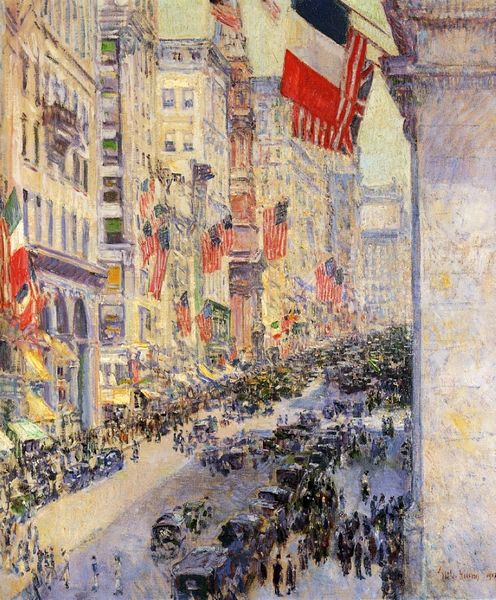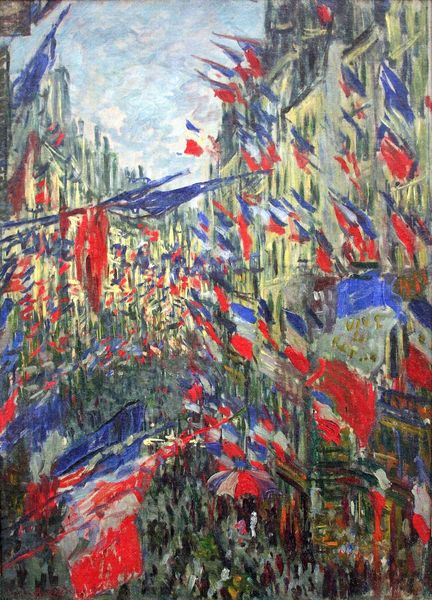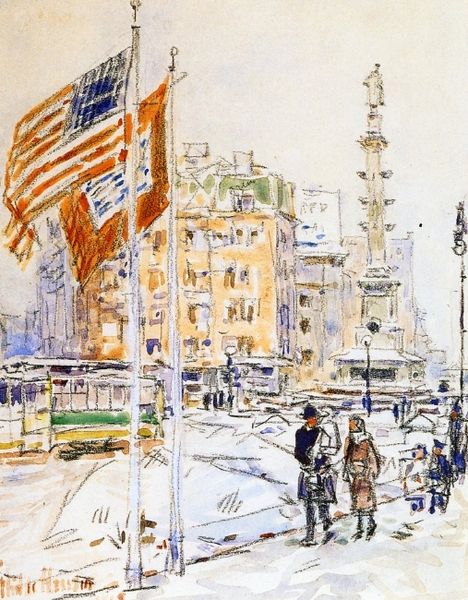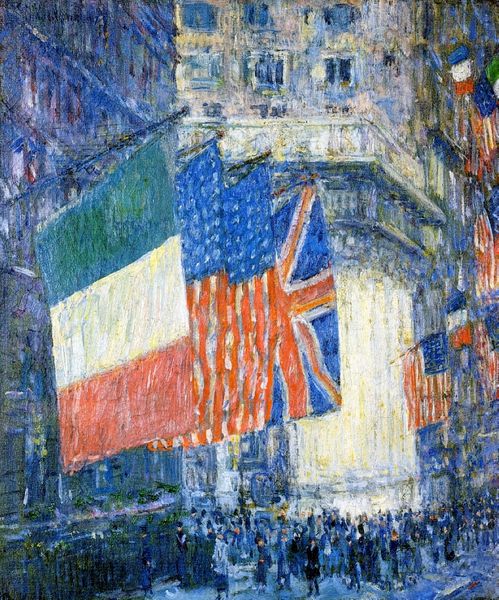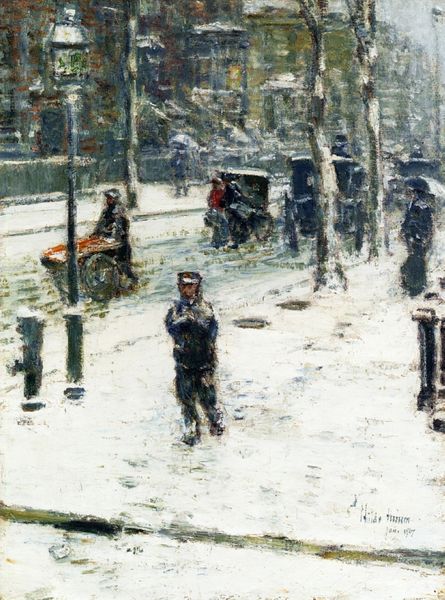
Copyright: Public Domain: Artvee
Curator: Childe Hassam's "Rainy Day, Fifth Avenue," painted in 1916 using oil paint, presents an iconic cityscape shrouded in a melancholic atmosphere. What's your immediate take on this scene? Editor: Immediately, the overwhelming impression is of a somber mood. The blurred, almost dissolving forms evoke a sense of transience and the relentless rhythm of city life. I’m interested in how those flags play into this muted palette, offering a rare bright hue, or perhaps a cynical commentary? Curator: Indeed. Consider the brushwork – distinct yet blended, creating an overall effect of optical mixing. The limited color palette—primarily blues, grays, and whites—enhances the feeling of a rain-soaked environment. Semiotically, each brushstroke acts as an index of the artist's fleeting impression. Editor: Hassam painted this during World War I. With its American flags displayed along a bustling Fifth Avenue, is he making a bold patriotic statement amidst global turmoil, or using the image to subtly underscore anxieties? Remember, there were very conflicting opinions during this period about American neutrality. Curator: The structural composition emphasizes verticality through the buildings, the reflected lines in the wet pavement, and even the flags themselves, contributing to a visual tension. It is neither strictly celebratory, nor despairing; it suggests something caught in between these oppositions. The composition achieves a sense of balanced disquiet. Editor: Perhaps this balance, as you say, reflects the societal ambiguities of the time. Public displays of patriotism and the normalization of a global war certainly did nothing to soften what were difficult and precarious economic realities on the ground in New York. The way Hassam depicts the mass of umbrellas almost as if they are a faceless, indistinguishable crowd, could equally convey resilience or societal numbness. Curator: Precisely, by manipulating pictorial elements he delivers a commentary on form itself, showing that representation doesn't occur in isolation, it requires our participation in visually deciphering form and meaning in an ongoing and relational dialogue. Editor: Absolutely, viewing it today forces a recognition of historical narratives around patriotic displays and how artworks serve as markers in these ongoing, fluctuating public discussions. They echo beyond their time. Curator: Indeed. The painting offers not just a window onto a moment in time, but also a mirror reflecting the ever-changing interpretations we bring to it.
Comments
No comments
Be the first to comment and join the conversation on the ultimate creative platform.
